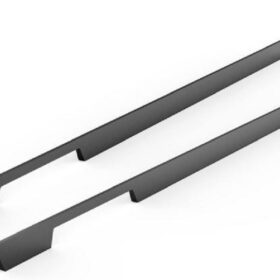Regulatory Compliance and Standards for Aluminum Profiles in Cabinetry
Aluminum profiles have become increasingly popular in the cabinetry industry due to their durability, versatility, and aesthetic appeal. However, it is crucial to ensure that these profiles comply with regulatory standards to ensure safety, quality, and environmental sustainability. This article provides a comprehensive overview of the regulatory compliance and standards that govern the use of aluminum profiles in cabinetry.
Material Standards
International Standards
Aluminum profiles used in cabinetry must adhere to international material standards such as ISO 9001 and ISO 14001. These standards define the minimum requirements for quality management systems and environmental management systems, respectively. By complying with these standards, manufacturers demonstrate their commitment to producing high-quality and environmentally friendly products.
American National Standards
In the United States, the American National Standards Institute (ANSI) establishes standards for various industries, including cabinetry. ANSI A161.1-2020 is the primary standard that applies to aluminum profiles used in kitchen and bathroom cabinets. This standard specifies dimensional requirements, performance criteria, and testing methods to ensure the durability and safety of cabinetry.
Safety Standards
Consumer Product Safety Act
The Consumer Product Safety Act (CPSA) is a federal law that aims to protect consumers from unreasonable risks of injury or death from consumer products. Aluminum profiles used in cabinetry must comply with CPSA requirements, including the absence of sharp edges, pinch points, or other potential hazards. Manufacturers must also provide clear safety instructions and warning labels.
Flammability Standards
Some cabinetry applications, such as kitchen cabinets, require compliance with flammability standards. Underwriters Laboratories (UL) is a leading organization that develops and tests products for safety, including cabinetry materials. UL 617-2019 is the standard for fire safety testing of cabinetry, and it specifies the performance requirements that aluminum profiles must meet to prevent the spread of flames.
Environmental Standards
Green Building Standards
Sustainable building practices are becoming increasingly important, and aluminum profiles used in cabinetry can contribute to green building certifications. The Leadership in Energy and Environmental Design (LEED) certification program recognizes buildings that meet certain environmental standards. Aluminum profiles can contribute to LEED points by being made from recycled materials, having low VOC emissions, and being manufactured in an environmentally responsible way.
Waste Reduction and Recycling
Manufacturers of aluminum profiles must adhere to regulations and standards aimed at reducing waste and promoting recycling. The European Union’s Waste Electrical and Electronic Equipment (WEEE) Directive requires manufacturers to take back and recycle end-of-life products, including cabinetry made with aluminum profiles.
By complying with these regulatory standards, manufacturers and suppliers of aluminum profiles in cabinetry can ensure the safety, quality, and sustainability of their products. Consumers can be confident that the aluminum profiles used in their cabinetry meet the highest standards of performance and environmental protection.
-
2024-11-29Top Trends in Modern Kitchen Cabinet Pulls for 2024
-
2024-11-28The Ultimate Guide to Modern Kitchen Cabinet Pulls- Materials, Styles, and Tips
-
2024-11-27Elevate Your Kitchen Design with These Must-Have Modern Cabinet Pulls
-
2024-11-26Sleek and Stylish- The Best Modern Kitchen Cabinet Pulls for a Contemporary Look
-
2024-09-14Exploring the Different Types of Modern Closet Door Pulls and Their Applications
-
2024-09-14How Cabinet Door Pull Handles Support High-Traffic Areas
-
2024-09-06Cost-Benefit Analysis of Investing in High-Quality Long Wardrobe Door Handles
-
2024-09-04How Flat Cabinet Handles Enhance Modern Interior Design






